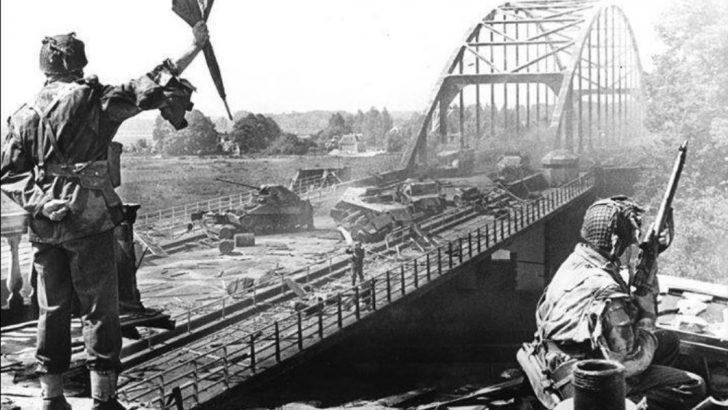A Bloody Week: The Irish At Arnhem
by Dan Harvey (Merrion Press, €14.95/ £12.99)
Joe Carroll
Arnhem is the latest in the series of books in which Dan Harvey, a retired Irish army officer, recounts the exploits of Irish combatants in well-known battles. But the attempt to seize the bridge over the Rhine at Arnhem in September 1944 ended in defeat and heavy Allied casualties, many Irish among them.
As the author explains, Operation Market Garden was too hastily planned for a difficult terrain crossed by Dutch rivers and canals. It was the brain-child of a general with close Irish connections, Bernard Montgomery, fresh from commanding the breakout from Normandy after D-Day and the British army’s thrust across northern France and into Belgium.
Final thrust
Montgomery, probably jealous of the exploits of his American rival, General George Patton, on the southern flank of the Allied advance, was impatient to make a crossing of the lower Rhine and to advance on the industrialised Ruhr Valley. This would open up a final thrust of the British forces across flat northern Germany on to Berlin itself before the Russians got there.
Market Garden was to be the biggest airborne operation in history as 35,000 US and British paratroopers in aircraft and gliders were to be dropped behind the German lines and seize five bridges in Dutch territory.
Meanwhile, a large army under British command was to advance rapidly along a 64-mile road taking advantage of the captured bridges and culminating at the vital bridge over the Rhine at Arnhem. This bridge was to be seized by a largely British airborne force and provide the gateway into Germany.
But the British intelligence had been faulty and the paratroopers, while seizing the north end of the bridge, were quickly outnumbered and outgunned by German forces far stronger than expected.
Montgomery later defended his decision to unleash Operation Market Garden and blamed his superiors”
The British were forced into an enclave in the western suburb of Oosterbeek and held out for nine days while fresh supplies and the reinforcements expected from the advancing army never reached them. They put up an heroic struggle graphically described by the author drawing on his own military background.
He estimates that more than 300 Irish from north and south were involved in this desperate battle. Overall, 1,485 were killed, 6,500 taken prisoner and 2,400 escaped to fight another day.
British intelligence had been faulty and the paratroopers, while seizing the north end of the bridge, were quickly outnumbered”
Montgomery later defended his decision to unleash Operation Market Garden and blamed his superiors (meaning General Eisenhower) for not providing the necessary resources. “I think we may be going a bridge too far,” one of Montgomey’s generals commented to him as failure loomed.
An interesting Irish angle is that one of the Anglican chaplains in the Arnhem cauldron was Alan Buchanan, from Fintona, Co. Tyrone and a Trinity College graduate.
He was taken prisoner and finished the war in Stalag X1-B in Fallingbostel.
Later, when he was 54 in 1969, he was to become the Church of Ireland Archbishop of Dublin.



